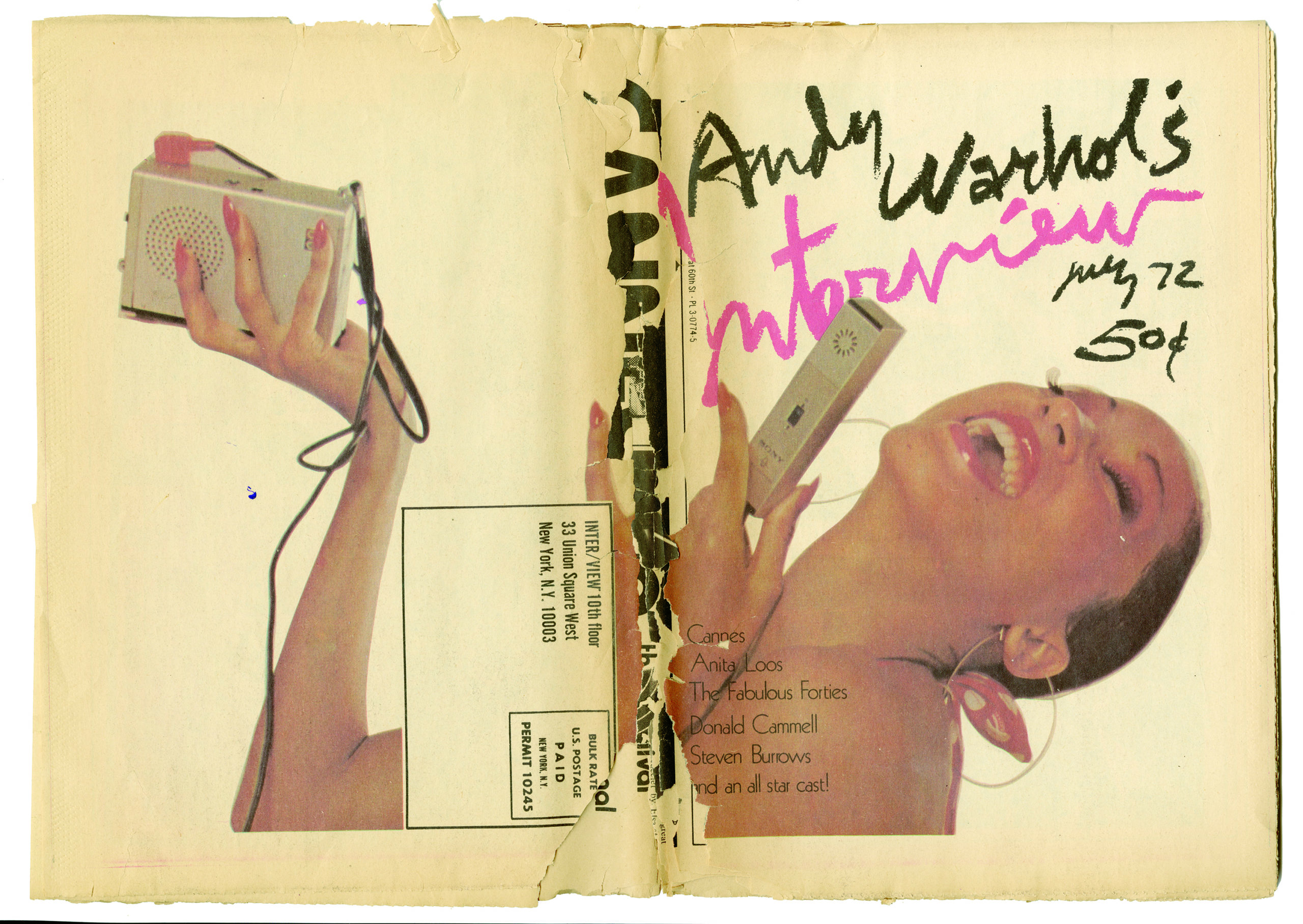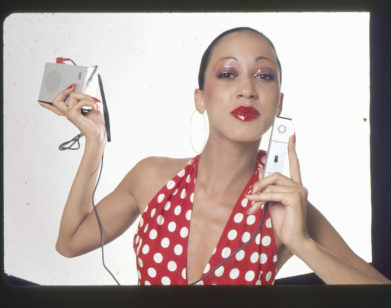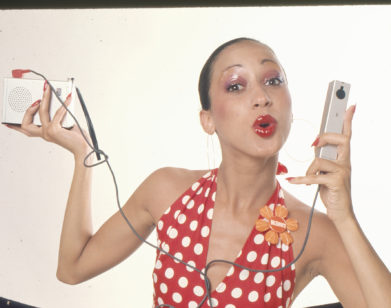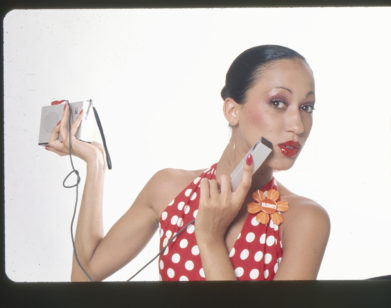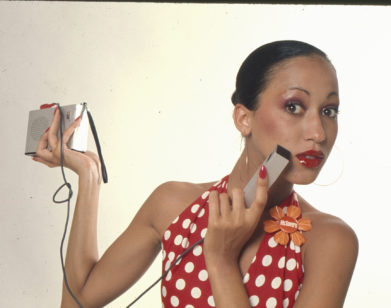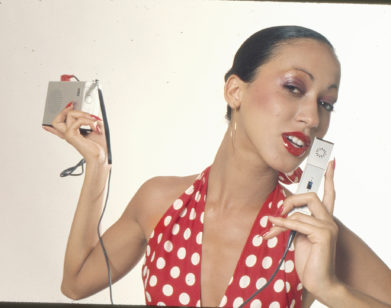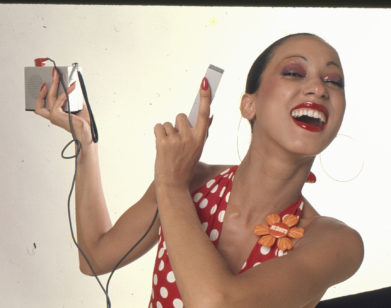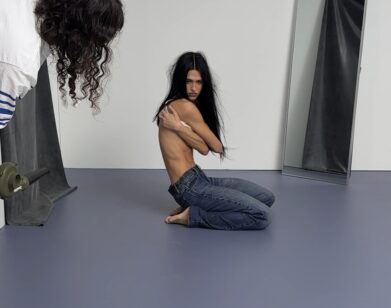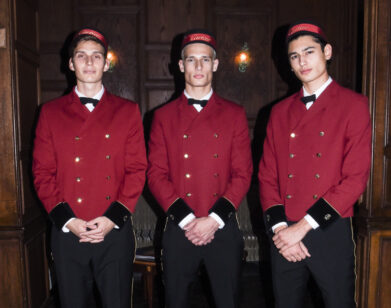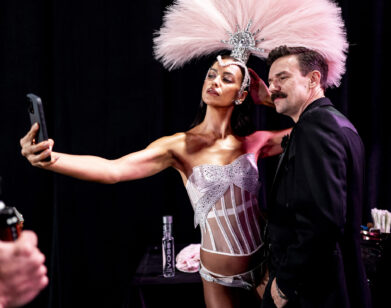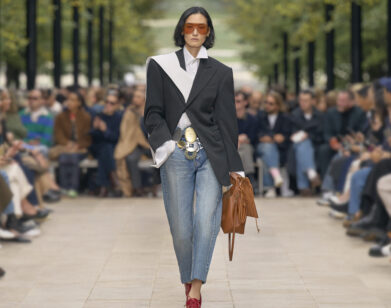cover girl!
Pat Cleveland on Partying With Richard Bernstein and the Factory Crew
Fifty years ago, Richard Bernstein began his two-decade reign as Interview’s in-house cover artist, heightening some of the most famous faces in the world with his signature pop power. One of them belonged to Pat Cleveland, whose July 1972 cover is still one of our favorites. Our editor-in-chief Mel Ottenberg caught up with the superstar model to hear all about it.
———
PAT CLEVELAND: This is Pat!
MEL OTTENBERG: This is Mel! Hi, Pat.
CLEVELAND: Good afternoon, or is it morning where you are?
OTTENBERG: I’m in New York. It’s sunny and freezing. Where are you?
CLEVELAND: I’m in Jersey. It’s sunny and kind of freezing, but I’m inside now. I’m working on a canvas while I’m talking to you, because I paint. So what’s up?
OTTENBERG: Well, it’s the 50th anniversary of Bernstein doing Interview, and as his number one fan, I wanted to talk to one of the OG muses from one of his first covers.
CLEVELAND: What does OG mean?
OTTENBERG: Original.
CLEVELAND: Oh, okay.
OTTENBERG: I was reading your interview again, and I just wanted to ask you a few questions about it.
CLEVELAND: Go right ahead.
OTTENBERG: Cool. So it was July 1972, which was an amazing moment in time for you. Can you give me an overall vibe of what life was like then?
CLEVELAND: Oh, it was beautiful. New York was wonderful. Richard Bernstein was so gorgeous with his curly hair and his positive outlook on things. I remember we had this really nice relationship. I would go over to his place at the hotel on 23rd Street, The Chelsea Hotel. He had this girlfriend, and he said, “Oh, we have to do pictures with her because she’s just starting.” Her name was Berry Berenson. I had already known her since I was a teenager because I used to go over to her house when I was in Vogue with Carrie Donovan and Diana Vreeland. She photographed me.
OTTENBERG: Oh, I’m deep in this conversation. Go on.
CLEVELAND: They had just started doing those color covers at Interview. Donna Jordan had the first color cover, and I had the second one. It was so glamorous. We were all partying together all the time, and work and play was the same thing.
OTTENBERG: Yes.
CLEVELAND: So, I’m 22 years old, and oh god, we had such a hot gang of friends. Stephen Burrows and Halston and Richard Bernstein and Calvin Klein. We’d all go out to Fire Island for the weekends—we used to stay in Stephen’s house, and Paul McGregor’s. There were only a few houses on Fire Island at the time. I remember Pat Ast. She was really hot because she was just starting to do interviews and everybody wanted to be a movie star. That’s why Richard Bernstein made those glamour covers. Andy didn’t do the covers. Richard Bernstein did.
OTTENBERG: Exactly.
CLEVELAND: When Pat Ast interviewed me, I had just gotten back from a trip to Mexico, and we were hanging out on the couch. I think we were a little bit stoned or something. She was always saying things like, “You have no charisma. You’re just this and that,” really insulting me all the time. But I loved her because we all could insult each other and get away with it. That was a game we used to play, say the worst things to each other about each other. That was one of those Factory things, you know?
OTTENBERG: Like, “You’re so boring,” or whatever, but it’s just teasing.
CLEVELAND: Yeah. So we had that interview, and I took it like, “This is cool, we’re in, and we’re all becoming stars like in the old days.” We were into black and white movies, King Kong, and all that stuff. So I’m sitting on this sofa there, and I have the little microphone, and I’m just so happy because she’s interviewing me, and I have on my favorite jacket that this Mexican sailor boy gave me.
OTTENBERG: Wait. I’m staring at it right now. So this jacket you had gotten on this fun trip to Mexico?
CLEVELAND: Yeah. With Stephen Burrows and Don Finley, who was the music guy for all the designers. He made these special R&B tapes that we walked to in the shows. We were down there, and we were paragliding, dropping mushrooms, and riding on sailboats and yachts and everything. So Pat Ast is there with her curly hair, and her big self—we all loved her because she was so flamboyant. And she goes, “Pat, tell me what’s going on.” And I said, “Okay, Pat.” We both had the same name. Sitting on that sofa, I felt like a star. Andy was such good luck for me because back then everybody wanted to meet him, and I was part of the gang. If Andy was in Europe, we’d go off to bordellos together, or do stupid stuff with Antonio Lopez. We were just street kids, teenagers making it big with money in our pockets. Everybody was trying to make it with whatever little talent they had. Berry Berenson was [Elsa] Schiaparelli’s granddaughter, and she was just out there taking pictures. It was Richard Bernstein who set her up with photography and made her noticed. He was really lovely like that.
OTTENBERG: And then this picture that Berry took ends up on the cover. It’s one of the best covers of Interview in the last 53 years. It’s also just such an amazing moment, it’s so free and beautiful. Was this at Berry’s, too, or is this in a studio?
CLEVELAND: No, that was at her house.
OTTENBERG: So this is basically the same moment. Pat’s making you laugh?
CLEVELAND: We were laughing our heads off because I had my nails really long and red, and red lipstick—nobody was wearing red lipstick but me and Donna Jordan and a couple of drag queens. It was a big deal to have the red shiny lips and a tape recorder. Those tape recorders were so hot. High tech.
OTTENBERG: Absolutely. What else can you tell me as a mega fan about Richard Bernstein? You guys were friends before Interview, clearly. But besides the fact that he was hot, which I can tell—a lot of him is a mystery to me.
CLEVELAND: Richard was like a brother, always watching out for me. They should do a movie on him because he was so generous and beautiful. His eyes looked like kaleidoscopes with blue and green and sparkles coming out. He was the new Walt Disney, but bigger. He turned everybody into a glamourpuss. His studio in The Chelsea was on the first floor. There was a big, red metal door and a big four-poster bed with art all around. You’d walk in, and it would smell like spray paint. And then you’d hang out for hours just giggling, and listening to music, and flopping back on the bed, looking up at the ceiling, and enjoying your Bohemian life, being free. Everybody was just so in love with each other.
OTTENBERG: Fantastic. Was there hair and makeup, or did you just show up looking fabulous?
CLEVELAND: No, no, no. I just put my own makeup on. That was it.
OTTENBERG: As Pat’s saying in the interview, “Baby, a true star.”
CLEVELAND: Yeah. Andy called us superstars, so I get really offended when people say, “Oh, you’re a supermodel.” I’m not a supermodel, I’m a superstar.
OTTENBERG: Amen.
CLEVELAND: Amen. Twinkly, honey.
OTTENBERG: It’s fashion, it’s modeling, but it’s also a type of theater that is so extraordinary.
CLEVELAND: Fashion is theater, and we just walk around in it all day, every day. How we used to be in New York, we were the runway in the street, honey. We were trying to catch up with each other, or walk in the shadow of it—just trying to spread the light of fashion all around.
OTTENBERG: Yeah. The other reason I wanted to talk to you was because of how you’re really pushing love and positivity in your interview. That’s what was so delicious to the crowd then, and to me now—50 years later. At the end of this interview with Pat Ast, she says, “I see you as a great Egyptian princess, and as a great Egyptian princess, I grant you three wishes in life. What are they?” And your response is, “Love, truth, and the brightest happiness that anyone could ever find.” I love it.
CLEVELAND: Well, let’s keep going in that direction, because you got to learn to love your true self. Once you find that, then you can share it and see it in everybody else.
———
© 1972 The Estate of Richard Bernstein / Artists Rights Society (ARS), New York

